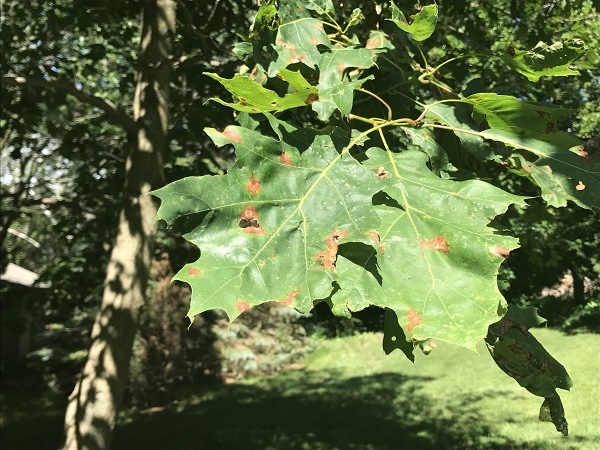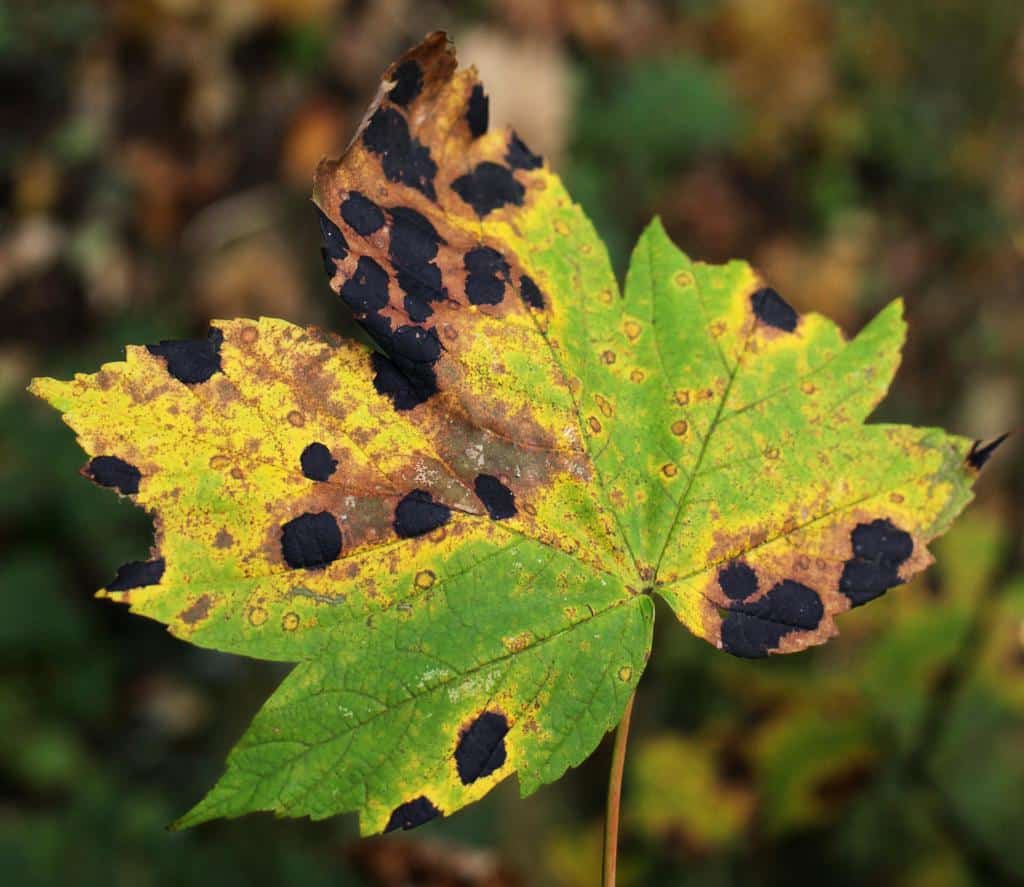black spots on tree leaves in illinois
Treating Black Leaf Spot Fungus. Unsightly black spots on maple leaves wont harm trees.

Maple Tree Diseases Lovetoknow
Some spots are raised shiny and coal black others may.

. Apple scab is a common disease of apple and crab apple trees as well as mountain ash and pear. These spots are larger than those of spot anthracnose reaching about 14 inch in diameter. The University of Illinois Extension lists cercospora coniothyrium cristulariella sphaceloma elsinoe gnomonia hendersonia marssonina microstrom monochaetia mycosphaerella phyllosticta and septoria as fungi that cause leaf spot disease on hickory trees.
Symptoms begin as dull gray spots on leaves that grow and become velvety brown and eventually black. The majority of the Silver Maple trees throughout the Village this year have an issue called tar spot fungus. The affected leaves wither and commonly drop prematurely.
Infected leaves develop spots then turn yellow or brown and drop off the tree. The solution to eliminating black spots on maple. Are the trees sick.
In spring a velvet-like green appears on branches. There are a couple types of fungi that cause those big brown or black spots on maple trees. The same bacterium may cause shoot blight on blueberry cherry maple and pear.
The symptoms of tar spot will appear in mid-June as small pale yellow spots. It starts with tiny black spots on leaves no bigger than a pinhead. Several different types of fungi cause similar leaf spots in hickory trees and other leafy shade trees.
As the disease progresses the leaf tissue around the black spot often yellows and premature leaf drop. Black spot downy spot or white mold ink spot spot anthracnose leaf blister or curl scab shot-hole sooty blotch and tar spot. It impacts many trees but doesnt usually present any critical danger to them.
Soon the entire leaf turns yellow and falls. All defoliation of black walnut trees is not due to leaf-spot diseases. If youre seeing spots on maple trees you are not alone.
It impacts many trees but doesnt usually present any critical danger to them. It starts with small yellow spots on growing leaves and by late summer these yellow spots expand into large black blotches that look like tar has been dropped on the leaves. Removing live leaves from the tree would stress the maple if done too often more than once a year.
Trees infected with maple leaf tar spot are unsightly but the fungal disease does not affect the overall health of the plants. Getting rid of black leaf spot must be a two-pronged attack. Its fine to wait for leaves to fall naturally.
Leaves may be crinkled along the edge or along the midvein. This is because a fungal pathogen in the genus Rhytisma has taken hold. Possible causes include poor drainage damaged roots compacted roots high soil pH and nutrient deficiencies in the plant according to James Schuster University of Illinois Extension horticulture educator.
Usually tan dark brown yellow g ray purple or black. Its caused by a fungus that infects leaves and fruit leaving the latter unsuitable for eating. The following year the fungus starts to expand.
Venturia leaf spot Venturia acerina is another fungal disease similar to that of anthracnose and maple leaf blister that overwinters on leaves and infects maple leaves in the spring. True to its name the fungal infection produces lesions with a scab-like appearance on leaves and fruit. Apple scab is a disease that affects apple and crabapple trees.
This allows the oak tree to photosynthesize and turn sunlight into energy for processing nutrients and moving water throughout the structure of the branches trunk and roots. Black spot disease is a fungus that mostly attacks fruit trees like the cherry tree walnut grapevine raspberry blackcurrant oak or red currant certain shrubs like hydrangea and also vegetables such as cucumber bean pea. You will want to work with such plants only in dry conditions.
Symptoms include black spots on the foliage and fruit husks and shriveled nuts. They will grow optimally at average annual temperatures between 20 and 25C 6877F in a deep well draining loam and sandy loam with a pH between 50 and 55. Tar spot outbreaks are becoming more common and its distinct.
Symptoms will progressively spread year to year. Black spot disease is diagnosed when black or brown spots appear on leaves. Live oak leaves should be flat dark green and healthy.
Black spots on oak leaves probably indicate a fungal problem. Gather and burn all the leaves to eliminate any chance of having the fungus survive. Some spots are raised shiny and coal black others may drop.
Heavily infested trees may lose their leaves prematurely. Heavily infested trees may lose their leaves prematurely. Ornamental cherry trees are especially vulnerable to leaf spot.
Symptoms Most leaf spot diseases develop as small scattered circ ular to oval dead areas in the leaves. The leaves on trees g rowing on poor sites or suffering from drought may also turn yellow and drop during August and September. Stage Cristulariella moricola reported to occur only in southern Illinois and Ohio causes a bulls-eye or zonate leaf spot.
By mid-July the spots expand and a thick raised black stomata starts to form. Black Spot disease appears on the leaves of trees and shrubs as small black circular spots that range in size from about ¼ inch to 1 inch in diameter. As the fungus develops those black spots on leaves are ringed with yellow.
Its likely black knot which is a fungal disease that most frequently attacks plum and cherry trees. Symptoms include brownblack spots on leaves shoots petioles buds and flowers. Black spots on tree leaves in illinois.
Because its spores travel on the wind and plash from leaf to. Aphids typically are found on the underside of the leaves only. Theyre all called tar spot and they most often affect.
Black spots on the leaves indicate a serious health problem that affects the overall health and. Infected fruit turns color in a similar fashion ending up brown corky and deformed. If that black film rubs off with a moist cloth or using your finger then I suspect it is sooty mold growing on the exudate from scale insects or aphids.
Removing live leaves from the tree would stress the maple if done too often more. I noticed that the maples in my neighborhood have black spots on them. Leaf spots are olive green at first later turning dark brown to black.
It gradually grows and becomes hard and black by fall which is usually when youll spot it. Stems may be girdled and die beyond the point of infection. Scale insects will be on the uderside of the leaves and on the branches as well.
You can also put them in the compost. Leaves that are infected with this fungal disease have round light green to yellowish-green areas approximately ½ to 1 inch in diameter that eventually blacken. Maple tar spot is a very visible problem for maple trees.
They normally appear on the upper surface of the leaf starting in the early to mid-spring.

Tubakia Leaf Spot In Oaks Horticulture And Home Pest News
Home Yard Garden Newsletter At The University Of Illinois
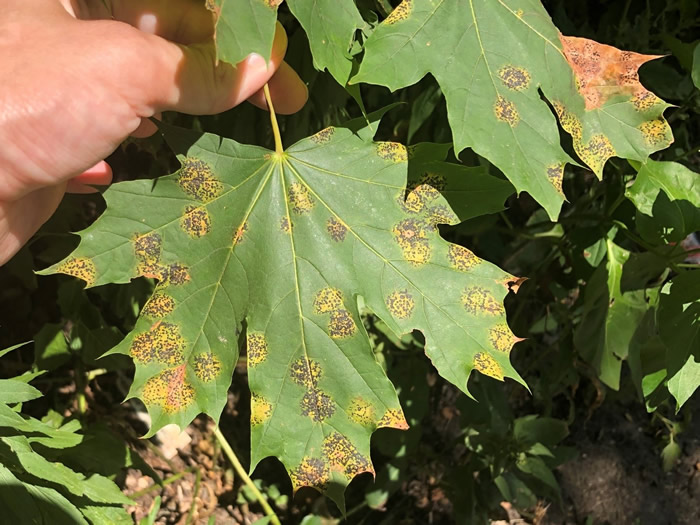
Unsightly Black Spots On Maple Leaves Won T Harm Trees University Of Illinois Extension
Anthracnose Tar Spots On Trees City Of Blue Island

Maple Tar Spot Identification Prevention Treatment Faqs For Northeast Ohio Independent Tree
Home Yard Garden Newsletter At The University Of Illinois

Fall Is A Wonderful Time To Take Walks Especially Since The Weather Has Been So Nice I Wanted To Tree Leaf Identification Leaf Identification Trees To Plant
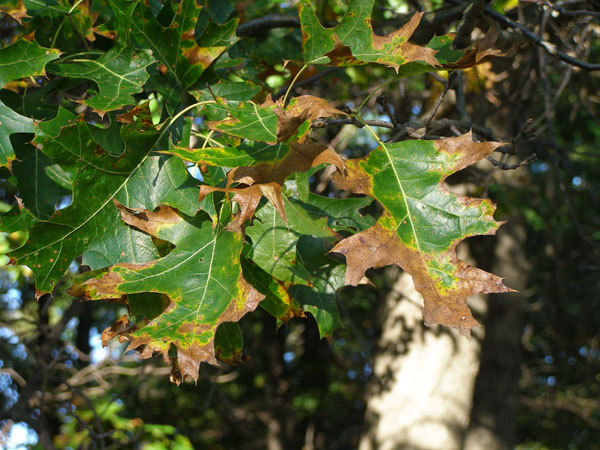
What S Wrong With My Plant Garden University Of Minnesota Extension
Anthracnose Tar Spots On Trees City Of Blue Island

Anthracnose Disease Of Deciduous Shade Trees Missouri Environment And Garden News Article Integrated Pest Management University Of Missouri
Home Yard Garden Newsletter At The University Of Illinois

Treatment For Black Spots On Maple Tree Leaves Davey Blog

All The Leaves Are Brown On The Norway Maple Fungal Disease Is Culprit News Fltimes Com
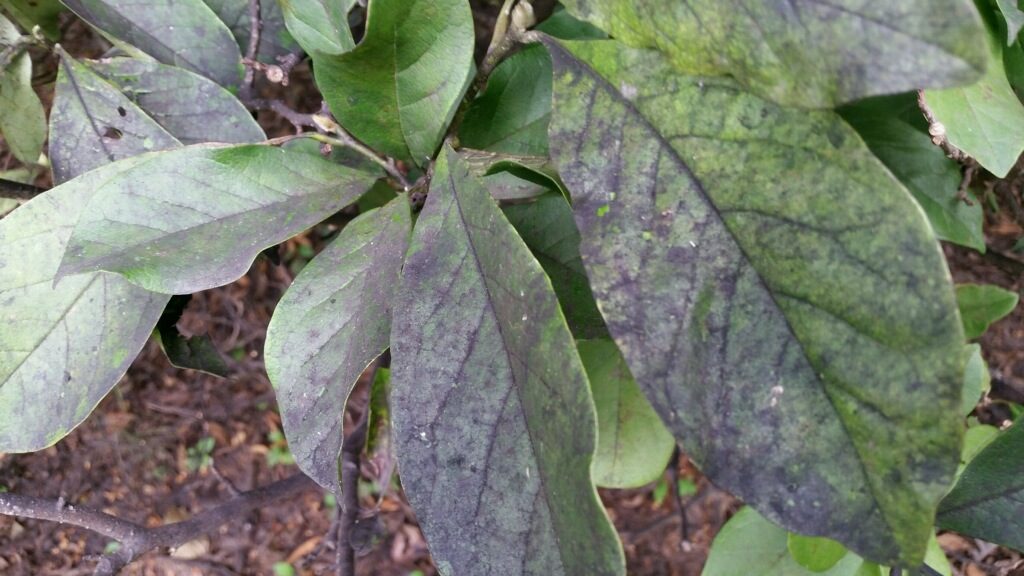
Everything You Need To Know About Treating Magnolia Scale Alsip Home Nursery

Unsightly Black Spot On Maple Leaves Will Not Harm Trees Riverbender Com

Black Spots On Bigleaf Maple Leaves
